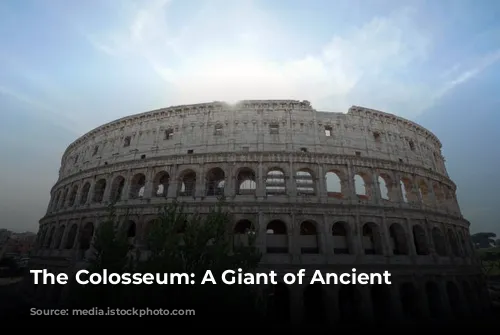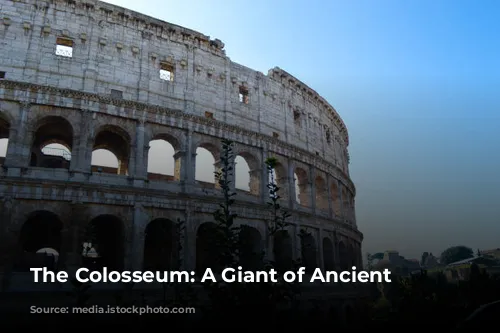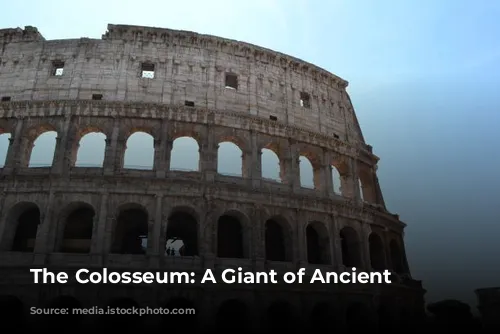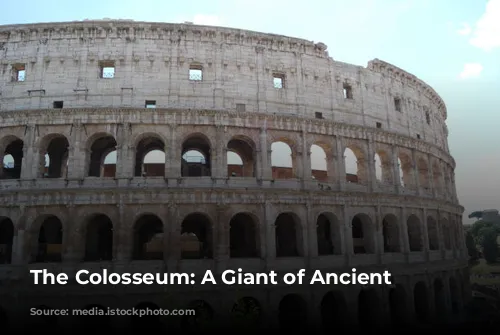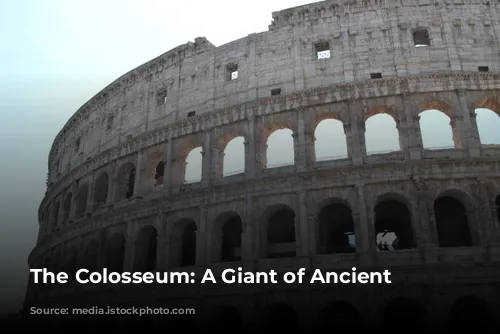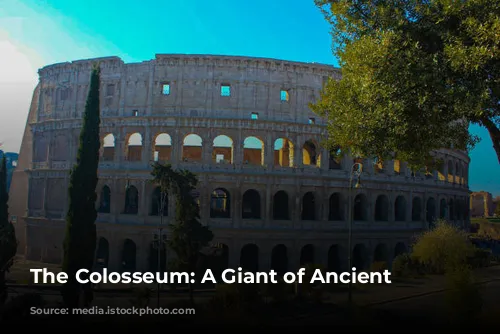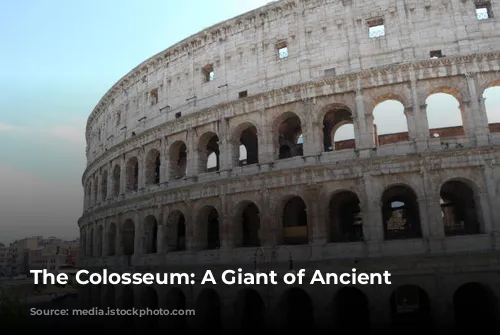The Colosseum, also known as the Flavian Amphitheatre, stands as a towering symbol of ancient Rome’s power and grandeur. It’s not just the largest and most awe-inspiring amphitheatre in the Roman world, but also one of the most famous monuments on Earth. This magnificent structure was commissioned by Emperor Vespasian of the Flavia family and officially opened by his son, Titus, in 80 AD.
A Grand Opening Fit for an Empire
The Colosseum’s grand opening was a spectacle unlike any other, lasting a staggering one hundred days. Romans were treated to thrilling gladiatorial combats, wild animal hunts, and other impressive shows. The historian Suetonius reports that a staggering 5,000 animals were slaughtered during this period. The arena was even flooded for naumachiae, recreations of epic naval battles, creating a truly breathtaking display of Roman ingenuity.
The Name that Echoes Through Time
But why is this architectural marvel known as the Colosseum? The name first appeared in a prophecy by the medieval monk Venerable Bede: “Rome will exist as long as the Colosseum does; when the Colosseum falls so will Rome; when Rome falls so will the world.” Some believe he derived the name from the towering statue of Emperor Nero, known as “the Colossus,” which stood near the amphitheatre before its destruction.
A Symphony of Stone and Architecture
Imagine the Colosseum in its full glory: a majestic, elliptical structure, dazzlingly white with travertine stone. The Colosseum boasted four tiers, each with eighty arches, the upper tiers adorned with grand statues. It’s hard to fathom that this architectural marvel was constructed in under ten years!
Roman Brilliance: The Art of the Arch
The Romans were masters of arch construction, a technique that allowed them to distribute the weight of massive structures with remarkable efficiency. The Colosseum is a testament to this skill, its design similar to that of Roman aqueducts.
Time’s Unrelenting Grip
While the Colosseum stands today, its glory is overshadowed by the passage of time. Only two-fifths of its outer brick wall remain, a silent testament to its past grandeur. During the Middle Ages, this architectural giant was stripped of its valuable materials – marble, lead, and iron – to build other structures like Barberini Palace, Piazza Venezia, and even St. Peter’s Basilica. The holes still visible in the Colosseum’s columns are a reminder of this plunder.
A Place for Spectacle and Entertainment
The Colosseum could accommodate up to seventy thousand spectators, offering them a perfect view of the arena’s action. Roman citizens enjoyed free entry, but seating was meticulously organized according to social status, with the highest tiers reserved for the common people and the front rows reserved for the elite, including senators, vestals, priests, and the emperor.
A Roof of Ingenious Design
Just like modern stadiums, the Colosseum offered protection from the sun. Its Velarium, a massive linen awning, was stretched over the arena using a complex system of ropes, winches, and wooden poles. One hundred sailors from the Imperial fleet were required to manipulate this ingenious roof, moving it in perfect synchrony to the beat of a drum.
The Arena: A Stage for Thrilling Shows
Today, only the cellars below the arena floor remain, where gladiators and animals were prepared for their entrances. We can still see the rails of the lifts and hoists used to raise them into the arena, creating a spectacular surprise for the audience as they appeared in a cloud of dust.
A Link Between Leaders and Citizens
The shows in the Colosseum were a fascinating blend of the symbolic and the real. They provided a powerful link between the citizens and their leader, offering a shared experience that transcended social divisions. The Colosseum provided a source of entertainment that distracted the masses from political turmoil.
A Day at the Colosseum
What went on inside the Colosseum? A variety of shows were held throughout the day, following a specific schedule. Venationes, contests between exotic animals and men, were the highlight of the morning. Occasionally, criminals faced their execution at the hands of ferocious beasts. The Silvae, a stunning recreation of a forest complete with trees, bushes, and animals, provided a less violent spectacle.
The Gladiators: Heroes of the Arena
The most popular events in the Colosseum were the gladiatorial combats. The gladiators, hailed as heroes, emerged from underground passages connected to their barracks, the Ludus Magnus, amidst the roar of the crowd. They would walk the arena, pay homage to the emperor with the famous words, “Ave Caesar, morituri te salutant” (Hail Caesar, those who are about to die salute you), and prepare for battle.
A World of Gladiatorial Variety
The term “gladiator” comes from Gladius, the short sword used by Roman soldiers. Gladiators were often former prisoners of war or impoverished individuals seeking fame and fortune. The profession offered wealth and popularity, particularly among women, who were known to pay handsomely for a night with a famed gladiator.
The Colosseum witnessed battles between various types of gladiators, each with unique weapons and fighting styles. The Retiarius, armed with a net, trident, and knife, faced opponents like the Secutor, who wielded a shield and sickle.
A Fight for Life and Death
The audience held the power to decide the fate of the wounded gladiators. A raised arm signaled a plea for mercy, and the emperor would make the final decision, either sparing the defeated gladiator with a thumbs up or condemning him to death with a thumbs down. The victorious gladiators were rewarded with gold palm leaves and riches.
A Bloodthirsty Crowd
Roman spectators reveled in the Colosseum’s violence, much like some people today enjoy “splatter” movies. But the difference lies in the stark reality of the spectacle. The smell of blood, burnt flesh, and wild animals filled the air, a pungent reminder of the brutality of the games.
A Legacy of Power and Endurance
After the fall of the Roman Empire, the Colosseum fell into disrepair, becoming a refuge for hermits, hospitals, and even a cemetery. However, its enduring power as a symbol of Rome’s grandeur continued.
Threatened with demolition by Pope Sixtus V, the Colosseum was declared a sacred monument dedicated to the Passion of Christ by Pope Benedict XIV, who placed a cross on a pedestal, symbolizing the suffering of Christian martyrs.
The Colosseum stands as a testament to the brilliance of Roman engineering, the brutality of their entertainment, and the enduring legacy of a once mighty empire. As Charles Dickens eloquently wrote, it’s “seeing the ghost of old Rome floating over the places its people walk in.”
